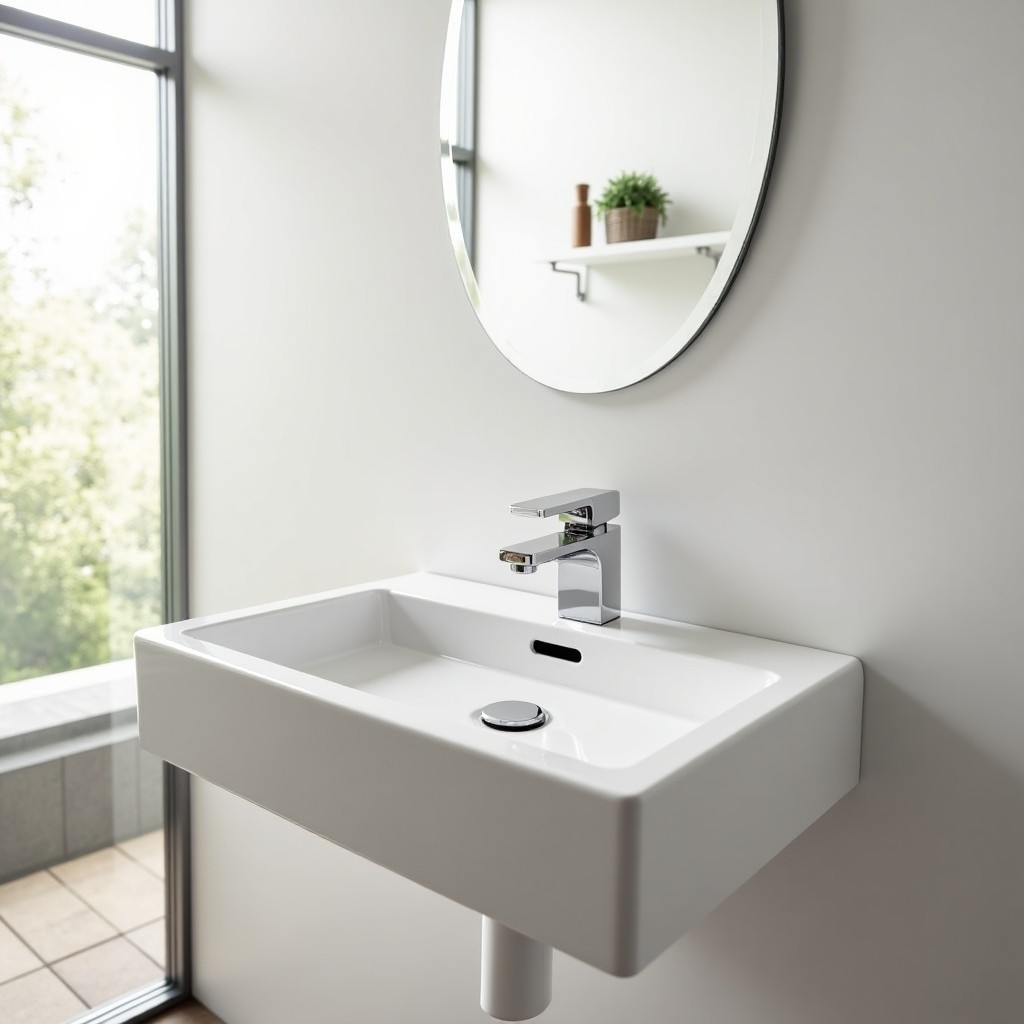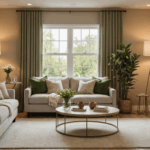Remodeling a small bathroom can seem like a daunting task. With limited space, every inch needs to be utilized effectively to create an area that is not only functional but also stylish. Bathrooms, often among the smallest rooms in a home, serve critical functions and demand a precise balance of practicality and aesthetics. According to the 2019 U.S. Houzz Bathroom Trends Study, small bathroom remodels are on the rise as homeowners look to maximize both space and style.
Understanding the importance of assessing your current layout is the first crucial step in your bathroom remodel journey. This preliminary analysis sets the stage for a successful transformation. By critically evaluating how your bathroom functions on a day-to-day basis, you can pinpoint areas of improvement, identify inefficiencies, and brainstorm creative solutions that align with your space-saving goals.
Begin by mapping out your existing layout. This can be done by sketching a basic blueprint of your bathroom that includes the dimensions of each fixture, doorway, and window. Use a notepad or an app designed for design enthusiasts such as SketchUp to get a clearer visual representation. This exercise will give you a better understanding of how traffic flows through the space and where potential bottlenecks or awkward corners might be hindering functionality.
Consider the placement of key fixtures such as the toilet, sink, and shower or bathtub. Ask yourself questions like: Does the current configuration make efficient use of the space? Is there enough room for comfortable movement? Are there fixtures that are redundant or could be combined to save space? Consulting with a professional designer can offer new perspectives, helping you pivot toward more efficient arrangements. For example, wall-mounted toilets and sinks can free up valuable floor space, while a corner shower can effectively use tight corners.
Another vital component of layout assessment involves identifying areas where redesign can enhance both the utility and aesthetics of the space. For example, increasing window size (if privacy allows) or switching to frosted glass can enhance natural light, making the space feel larger and more open. According to findings from the National Kitchen and Bath Association, well-lit spaces are highly desired by homeowners when considering modern bathroom remodels.
As you assess these aspects, consider how your bathroom’s layout aligns with your personal needs and lifestyle. For families, additional storage might be a priority, while individuals could prioritize more open floor space. Remember, a successful remodel is one that improves your bathroom’s functionality while also reflecting your desired style.
By thoroughly assessing your current layout, you lay a robust foundation for the rest of the remodeling process, ensuring that the eventual outcome is both space-saving and stylish. The next steps will build on this foundation, incorporating smart design tips to further optimize your space.
Choosing space-saving fixtures
When undertaking a bathroom remodel with limited square footage, selecting the right fixtures becomes an essential step for maximizing both space and style. In smaller bathrooms, every fixture must be doubly effective: functioning well within the space while also contributing to the overall aesthetics of the room. Fortunately, modern innovation in bathroom design offers a plethora of space-saving fixtures that can help you achieve this balance.
One key consideration is the selection of the sink. Wall-mounted sinks are particularly valuable in small bathrooms as they free up floor space, making the room appear larger. Their minimalist design can contribute a modern, clean look to the bathroom, seamlessly integrating into various decorative styles. Alternatively, opting for a pedestal sink can also be a wise choice, as it provides a slim silhouette while maintaining a classic appeal.
Another pivotal option is the integration of a compact toilet. Consider modern designs such as wall-mounted toilets, which have a concealed tank, providing a sleek appearance and taking up less room. For those who prefer floor-mounted options, elongated bowl designs can offer comfort without sacrificing space.
Showers can also be customized for efficiency. A corner shower installation, for instance, can maximize space by utilizing often-overlooked corners of the bathroom. For those looking for an alternative to traditional shower enclosures, a wet room concept can be highly effective. This design eliminates the need for bulky enclosures altogether, using a gently sloping floor and strategic drainage to keep water where it’s supposed to be.
Additionally, it’s important to consider multifunctional fixtures. For example, combining a shower with a bathtub to create a shower bath can save significant space while still allowing for both bathing options—a significant advantage in family homes or shared spaces.
Ultimately, the goal in choosing fixtures for a small bathroom remodel is to prioritize designs that offer maximum utility with minimal footprint, enhancing both the functionality and visual appeal of the room.
- Wall-mounted sinks and toilets free up valuable floor space and give a modern, streamlined appearance.
- A corner shower or wet room design can optimize space utilization by using corners or minimizing the need for bulky enclosures.
- Consider dual-function fixtures, such as a combined shower bath, to manage limited space without sacrificing functionality.
- Compact and elongated toilets save space while maintaining comfort, often with additional design benefits through concealed tanks.
- Selecting fixtures with a streamlined design can enhance a small bathroom’s aesthetic, making the space feel lighter and more open.
Color schemes and lighting
When enhancing the aesthetic appeal and functionality of a small bathroom during a remodel, color schemes and lighting play a pivotal role. The decisions made in this area can transform a cramped space into an inviting oasis, providing the illusion of a roomier environment while expressing your personal style.
One common mistake people make is choosing overly dark or excessively bold colors, which can overwhelm a small space, making it feel even more constricted. Instead, opt for light, neutral tones such as whites, soft grays, or pastel shades. These colors reflect more light and create an airy, expansive feel. If you’re eager to introduce more vibrant hues, consider using them as accents or in smaller quantities to maintain balance without compromising spatial perception.
Another potential pitfall is neglecting the ceiling’s contribution to the room’s atmosphere. A dark or dull ceiling can lower the visual height of a room. Instead, paint the ceiling a lighter shade to draw the eye upward, which enhances the sense of vertical space. Similarly, incorporating glossy or semi-gloss finishes on the walls can help reflect light, further amplifying the room’s brightness and the perception of space.
When it comes to lighting, inadequate illumination is a frequent issue that diminishes both the practicality and appeal of a bathroom. Layered lighting solutions are essential in any bathroom remodel, particularly in smaller spaces. Start with ambient lighting that uniformly brightens the entire room, such as recessed ceiling lights or a large central fixture. This base layer should be complemented with task lighting around the vanity area to ensure ample light for activities like shaving or applying makeup. Wall-mounted sconces on either side of the mirror or an overhead light bar can effectively provide focused illumination without casting unflattering shadows.
Accent lighting can add dimension and interest, accentuating design features or architectural elements. Consider installing LED strip lights along niches or under wall-mounted cabinets to highlight these areas without consuming much space.
A strategic combination of mirrors and lighting can further augment the feeling of spaciousness. Placing mirrors opposite windows or light sources can help bounce light around the room, creating a brighter and seemingly larger area. Oversized, frameless mirrors are particularly advantageous because they reflect the rest of the space, making it appear as though the room extends beyond its physical boundaries.
By circumventing the pitfalls of dark colors and inadequate lighting, and instead employing a thoughtful design strategy encompassing light color schemes and layered lighting, you can significantly enhance the ambiance and spaciousness of a small bathroom. Implementing these design tips will allow you to create a space that feels not only larger but also more serene and welcoming, aligning with both your style preferences and functional needs.
Smart storage solutions
In a tight bathroom remodel, smart storage solutions are crucial to creating a space that is both functional and stylish. The key is to utilize every bit of space without overcrowding, which can make an already small area feel claustrophobic. With some clever design tips and strategic planning, you can efficiently store all your essentials without compromising on style.
Firstly, consider vertical space, which is often underutilized in small bathrooms. Installing tall, narrow cabinets or shelving units that reach up toward the ceiling can provide ample storage without consuming precious floor space. These vertical solutions draw the eye upward, creating the illusion of a taller, more spacious room while providing practical storage options. Open shelving is another excellent way to store and display toiletries, towels, and decorative items. Opt for glass shelves to keep the look light and airy.
Another effective approach is to employ multifunctional furniture. Look for vanities with built-in storage or sinks with integrated shelving units to maximize utility. Floating vanities or wall-mounted cabinets can give the illusion of more floor space, offering a fresh, modern look while still offering concealed storage options for everyday essentials.
Consider utilizing the often-overlooked space above the toilet by adding shelves or built-in cabinets. This area can house toilet paper, cleaning supplies, or decorative elements, keeping them accessible yet out of direct view.
Don’t forget about hidden storage opportunities. A recessed medicine cabinet or niche can save space and create a seamless, uncluttered appearance. Corner shelves or tiered baskets take advantage of underutilized space while keeping items within easy reach.
Drawer organizers, baskets, and bins are excellent for minimizing clutter within cabinets. By categorizing and storing items neatly, you ensure that everything has its place, making daily routines smoother and more efficient.
Hooks and rails can be your best friends in a small bathroom, offering easy access to towels, robes, and accessories without taking up counter or shelf space. Over-the-door organizers are another smart choice, utilizing otherwise unused real estate for additional storage potential.
A bathroom remodel with space-saving design tips doesn’t mean sacrificing style for practicality. By incorporating these smart storage solutions, you ensure that your bathroom is not only a sanctuary of style and efficiency but also a true reflection of your organizational prowess. As you continue on your remodeling journey, remember that a thoughtfully organized space promotes serenity and enhances functionality, empowering you to enjoy your stylish new bathroom to the fullest.
Adding stylish accessories
Incorporating stylish accessories into your space-saving bathroom remodel is like adding the final brushstrokes to a masterpiece. Accessories not only serve functional purposes but also provide an opportunity to infuse personal style and elevate the overall aesthetic of the room. The key is to select pieces that complement your bathroom’s design without crowding the limited space.
One effective strategy is to choose a color palette or theme for your accessories that aligns with your existing color scheme. This creates a harmonious visual flow and can make the room feel more cohesive. For instance, if your bathroom has a neutral base, adding touches of metallic or glass through soap dispensers, towel hooks, or frames can introduce a sense of elegance without overwhelming the senses.
Mirrors are not just practical necessities but also powerful tools in enhancing perceived space. Opt for an oversized mirror or multiple framed mirrors that reflect light and create depth, making the bathroom feel larger and more luminous. Additionally, backlit or artfully designed mirrors can serve as both an accessory and an essential element of your lighting plan.
Textiles, such as towels and bath mats, provide another avenue to inject style while maintaining functionality. Choosing high-quality, plush materials in colors that accentuate your selected scheme can enhance comfort and visual appeal. Consider creative displays, such as rolled towels in a wicker basket or neatly folded linens on open shelves, to add texture and warmth to the space.
Art prints and plants are excellent for adding personality and life to your bathroom. Select moisture-resistant artwork that resonates with your style, whether it be abstract pieces, coastal scenes, or botanical prints. Position them strategically to draw the eye upwards or towards focal points in the room. Similarly, incorporating small, low-maintenance plants like succulents or air plants can introduce a pop of color and a touch of nature, boosting the room’s fresh vibe.
When accessorizing, focus on functional elegance—each piece should serve a purpose while adding to the aesthetic landscape. By carefully curating each accessory with an emphasis on harmony and utility, your small bathroom can become a sanctuary of space-saving design and chic sophistication.
- What are the best colors to make a small bathroom look bigger?
- Light, neutral tones, such as whites, soft grays, and pastels, can visually expand the space by reflecting more light. These colors create an airy ambiance, offering the illusion of a larger room while maintaining a clean and inviting appearance.
- How can I add storage without making my small bathroom feel cramped?
- Utilize vertical space by installing tall, narrow cabinets or shelving that reach towards the ceiling. Multifunctional furniture, like vanities with built-in storage or wall-mounted solutions, can also maximize storage while maintaining an open feel.
- Is it possible to include both a tub and a shower in a small bathroom?
- Yes, a combined shower bath, or an over-bath shower solution, can offer dual functionality while saving space. Such designs are particularly advantageous in small bathrooms where space-saving is paramount.
- What type of lighting works best in a small bathroom?
- Layered lighting is essential: ambient lighting for overall illumination, task lighting around mirrors for precision, and accent lighting to highlight design features. Combining these will ensure a bright, versatile environment without sacrificing style.
- Are there specific types of mirrors that can enhance a small bathroom?
- Oversized or multiple framed mirrors can amplify the perception of space by reflecting more light and creating depth. Backlit mirrors can also add a modern touch while providing necessary illumination.










